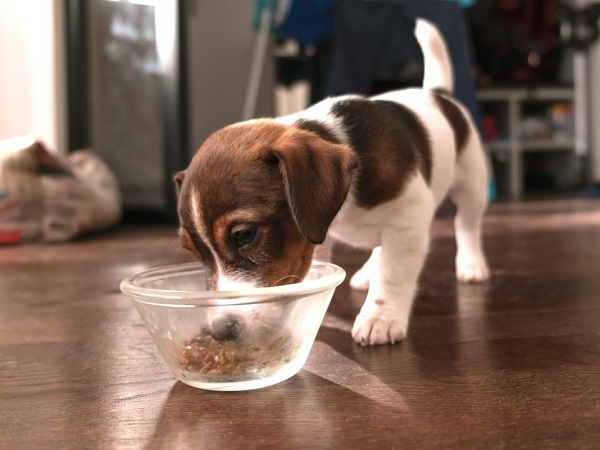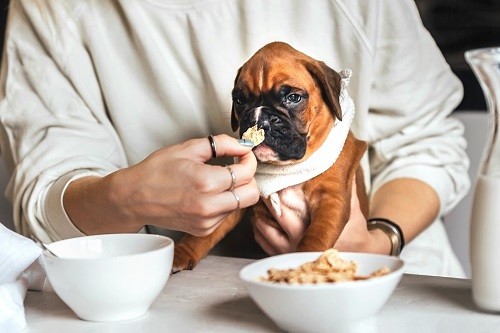Here in this article, we will share some details regarding the topic- Why should you be weighing your pet’s food? There are many reasons to do that. Pet owners have a lot of queries regarding their puppies and adult dogs. Some of the common questions include- Is my puppy eating enough?
Why is my dog overweight? How much should I feed my 1-month old puppy? Let us first start with a real-life scenario. A dog owner was feeding his dog as recommended by the veterinarian. The vet had suggested the owner give four cups of pet food every day.
And the owner was giving his dog 4 cups of food without a miss. Hence, the total intake of the dog was under strict supervision. The dog was not given any additional food by anyone. However, to everyone’s surprise, the dog was gaining more weight than it ideally should.
Every time the owner took his dog to the vet and put it on the weighing machine, the dog was found overweight. This situation put everyone in worry. The owner was even thinking of changing the vet. Even the vet was quite perplexed.
Then one day, the vet went to the house of the concerned pet. And then the puzzle got solved. You may be laughing to know the reason for the issue. The reason was nothing but the cups that the owner was using. The cups were huge.
He was not using the standard-sized cups. So, the regular intake of the pet was much more than was recommended by the vet. As per the vet’s prescription, the dog should be taking 250 calories of food each day. But because of the big-sized cups, the dog was intaking nearly 350 calories each day.
Then the vet recommended the dog owner purchase a weighing machine to measure the pet’s food. The other option was to buy a standard-sized cup from any registered pet shop. The owner understood the mistake and went for a weighing machine.
After that, he started to weigh the food and then give the exact amount of food prescribed by the vet. Thus, the dilemma of the pet owner got finally solved. The dog came back to proper shape in the next few months.
Ways to measure pet foods
So, you saw how important is the measurement of a pet’s food to maintain the health and wellbeing of the pet. According to the research studies, overfeeding of dogs happens due to improper measurements.
The ideal measurement that you find on the labels of pet food products is based on eight fluid ounces standard cups where the food should be to the top level. Here starts the problem since eight fluid ounces are different from eight weight ounces.
Thus, confusion arises because of the disparity of volume and weight. When measuring a volume, a cup of cotton and a cup of sugar measure the same. However, their weight is quite different. So, if you don’t use eight fluid ounces standard cup to measure the pet’s food, the entire calculation goes berserk.
You have to count the calorie correctly. There are quite a few pets food companies that put calories based on the weight on the labels of their company’s pet food products. Those weights are mostly in kilograms.
For example, one popular pet food brand says that their food is 4000 kcal/kg. It signifies that if you feed your dog 1 kilogram of that pet food, your dog will earn 4000 calories. However, you should not be giving 1 kilogram of food to your canine friend.
Hence, you should calculate the food based on every gram. In this case, every gram of the food will result in your dog taking in 4 calories. So, if your dog needs to take 350 calories of food a day, you should give your dog 87.5 grams of that specific brand’s pet food.
And you can weigh these 87.5 grams either with the help of 8 fluid ounces standard cup or with the aid of a weighing machine. The weighing machine is a rational or easy way to measure food. This is what most pet lovers follow.
Checklist to follow to ensure your pet’s proper food intake
So, you see that calculation is the key to the success of your canine friend’s wellbeing. Hence, the following is a checklist that you should follow to ensure that your pet is not overfed or underfed:
- Take your pet to the vet for suggestions and guidance.
- Let your vet check your pet. The vet will prescribe the amount of food the dog should take to avoid being underfed or overfed issues.
- If you see your vet is prescribing based on cup measurements, crosscheck with the vet about what the vet means by the cups.
- Verify with the vet about the measurements that the vet is recommending if possible. Use a calculator in front of the vet to calculate the recommended amount of food intake for each day.
- Generally, the vets prescribe the ideal food intake for an entire day. It is better to verify with the vet in how many breaks you can divide the whole meal of your pet (example: “Is it okay to divide the 400 calories intake each day into four meals day each of 100 calories?”)
- When you are satisfied with the total calories, you have to calculate yourself how many grams of food you have to offer to your beloved pet so that it grows up in a proper healthy way.
To conclude
Puppies and dogs need the right amount of food for their dietary needs. Always seek advice from your vet for recommendations. The vet can chalk out a diet plan for your pet as well. Indeed, a healthy pet is a happy pet!

 DogExpress
DogExpress



















 in Chandigarh, India.
in Chandigarh, India. 
